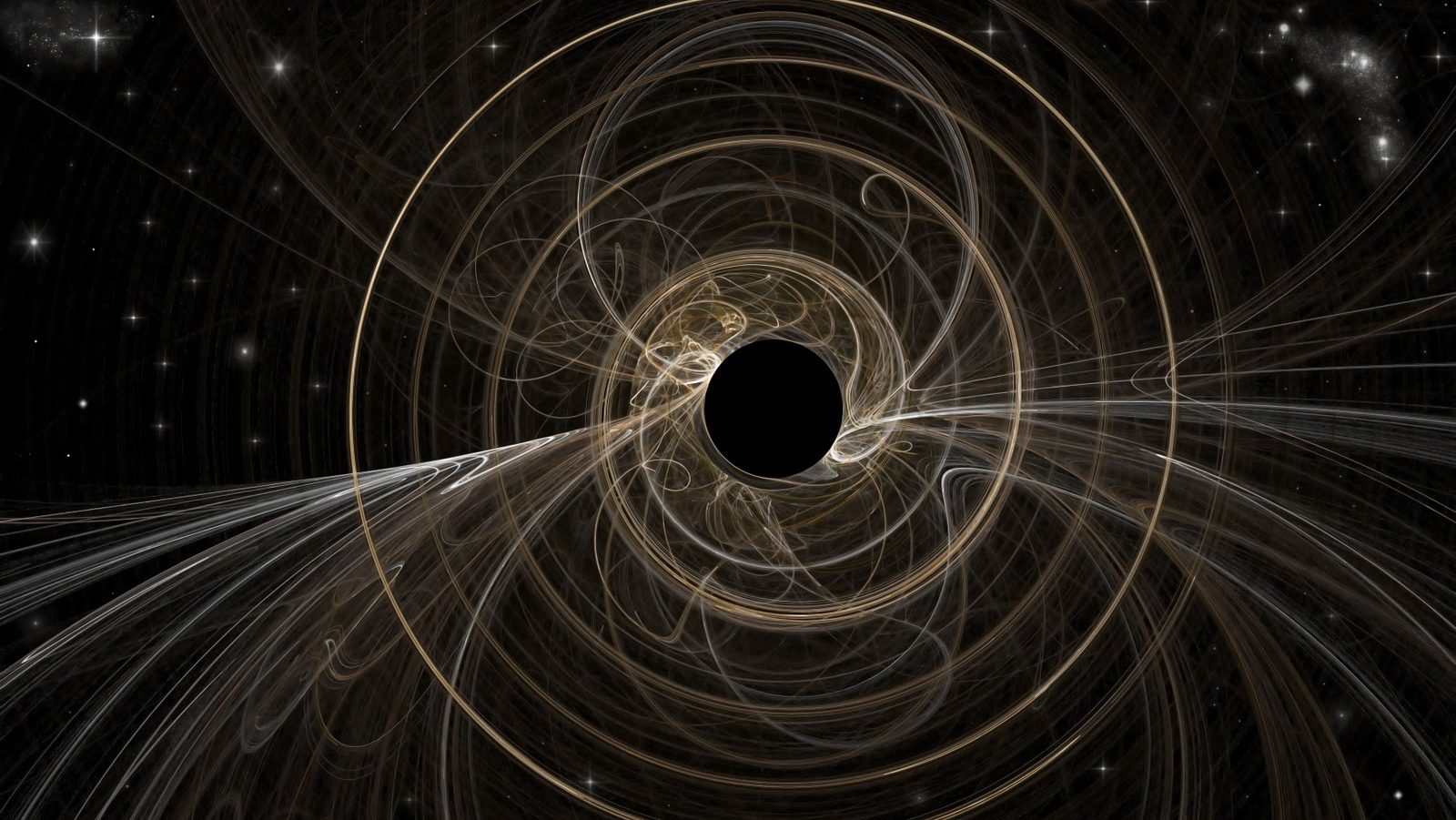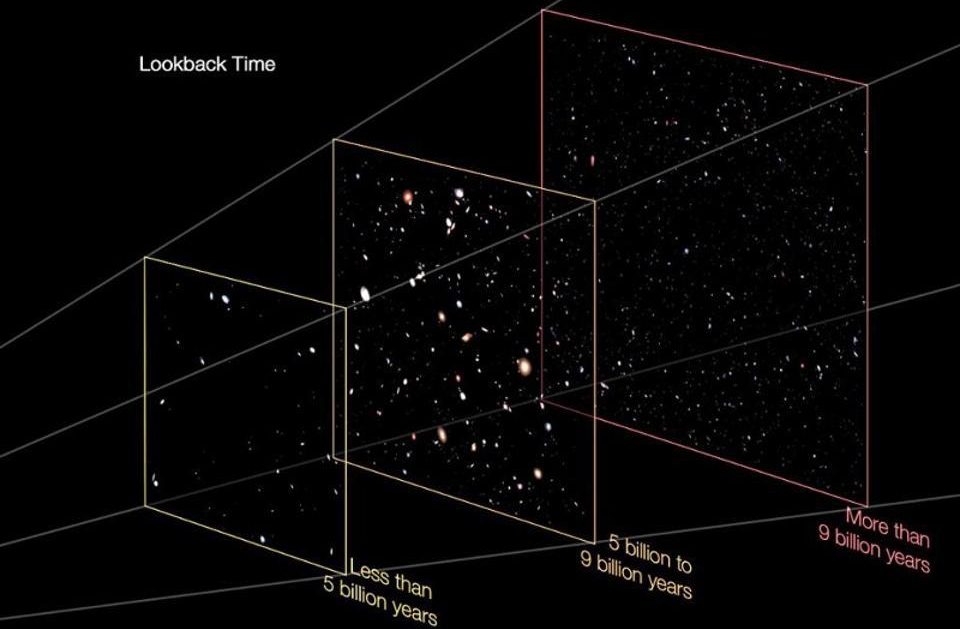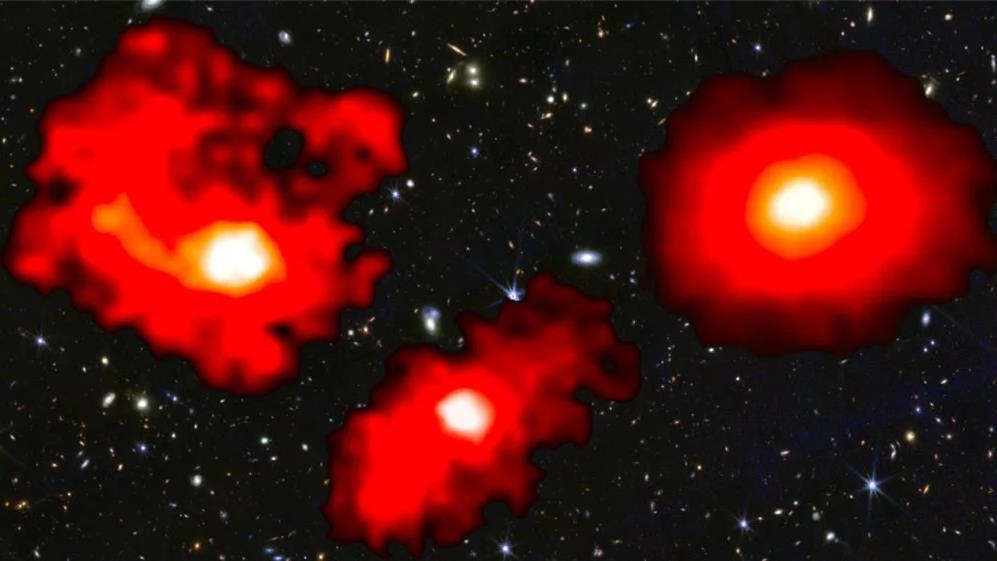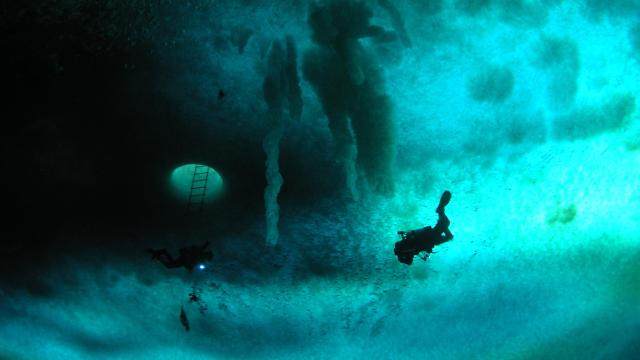What happens when someone falls into a black hole?
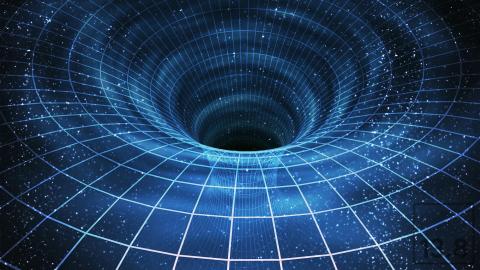
- Black holes are stranger than fiction, especially when we explore the weird effects of watching someone or something fall into one.
- Rotating black holes may be traversable if the physics as we understand it holds.
- To discuss the physics, we explore a fictional tale with a grand ending.
What happens when someone falls into a black hole? If you are the unfortunate soul being gobbled up, things don’t look too bad until they turn really bad. Unless, there is an outlet through a wormhole. And you are really lucky.
The fictional story below — an abridged version of one published in my 2002 book The Prophet and the Astronomer explains why. Since we now know that black holes exist and that even Jeff Bezos can fly into outer space, it is only a matter of time before humans fly into black holes — albeit a very, very long time from now: the nearest black hole to Earth (as of now) lies a “mere” 1,500 light-years away.
But first, a refresher. In his general theory of relativity, Albert Einstein equated gravity with the curvature of space around a massive body. The effect is quite negligible for light masses but becomes important for massive stars and even more so for very compact massive objects such as neutron stars, whose gravity is 100,000 times stronger than at the sun’s surface. Distortions of space caused by a larger mass (stars) will cause small moving masses (planets) to deviate from what Newtonian gravity predicts. Another remarkable consequence of Einstein’s theory of gravity is the slowing down of clocks in strong gravitational fields: strong gravity bends space and slows down time.
Now, on with the story.
***
In my young days, I traveled from planet to planet looking for old spaceship parts. It was in one of my travels in search of a rare gyroscope for a 2180 Mars Lander that I found “Mr. Ström’s Rocket Parts,” an enormous hanger littered with mountains of space garbage. While I was consulting the store’s virtual stock-scanning device to search for the gyroscope, Mr. Ström himself came to greet me. He was famous throughout the galaxy for claiming to have come closer than anyone to a black hole, a story that, to most, was just that — a story.
Like many before me, I asked Mr. Ström to tell me his story. After hesitating a while, he gave in.
“I was commander of a fleet built to explore the complex astrophysical X-ray source known as Cygnus X-1,” he started. “Since the 1970s, over three millennia ago, this was suspected to be a binary star system 6,000 light-years from Earth. The two members of the binary system, thought to be a blue giant star about 20-30 solar masses and a black hole about 7-15 solar masses, orbited so close together that the black hole frantically sucked matter from his huge companion into a spiraling oblivion. This mad swirling heated the in-falling stellar matter to enormous temperatures, producing the X-rays astronomers on Earth observed. Even though the data indicated that the smaller object of the pair had a mass much larger than the maximum mass for neutron stars, it was still not clear if it was a black hole. Since other attempts to identify it had failed, the League of Planets decided that the only way to know for sure was to go there.
“The fleet consisted of three vessels, each under the command of a Ström, a great honor to my family. I led the vessel named CX1, my middle brother led CX2, and the youngest led CX3. I will spare you the details of how the mission was prepared, and how, after many problems with our hyper-relativistic plasma drive, we finally arrived to within one light-month of our destination. Through our telescopes we could see an enormous hot blue star being drained by an invisible hole in space.
“We were instructed to fly single file toward the black hole, keeping a very large distance from each other; my younger brother first, my mid-brother second, and me last. We knew that, from a large distance, a black hole behaves like any other massive object, as the differences general relativity predicted happen only fairly close to it. We also knew that every black hole has an imaginary limiting sphere around it known as the ‘event horizon,’ which marks the distance from which not even light could escape.
“My young brother’s ship, the CX3, was to approach the hole, sending us periodic light flashes with a given frequency; we were to follow at a distance, measuring the frequency of the radiation emitted by my brother’s ship as well as the time interval between the pulses, and then compare them with the theoretical predictions for gravitational redshift and time delay. The three vessels plunged to a distance of 10,000 kilometers from the hole; while CX1 and CX2 hovered at that distance, my brother closed in to 100 kilometers from the hole. He was instructed to send us infrared radiation, but we detected only radio waves. The gravitational redshift formula was indeed correct. Furthermore, the intervals between two pulses increased quite perceptibly; time was flowing slower for my brother, as viewed from our distant ships. He plunged to the dangerously close distance of ten kilometers from the hole, only seven from the event horizon; this was the closest distance the ship could stand, due to the enormous tidal forces around the hole, which stretch everything into spaghetti. (Numbers assume a one-solar-mass black hole.)
“From that close orbit, my brother was to send pulses of visible light, but all we detected were (invisible) radio waves; we could not see my brother’s ship any longer, and I started to feel very uneasy. The theory was correct: a ship falling into a black hole will become invisible to a more distant ship (us) due to the red shifting of light. That also meant that we would never be able to see a star collapsing into a black hole, as it will become invisible before it meets its end. A related effect was the slowing of time. As my younger brother approached the black hole, the radiation pulses were arriving at increasingly long intervals. Thus, not only could we not see him, but we would also have to wait an enormous amount of time to receive any message from him. This confirmed the prediction that for a distant observer, the collapse of a star would take forever. Of course, for the unlucky traveler that freefalls into the black hole, nothing unusual with the passage of time would happen, as explained by the equivalence principle: gravity is neutralized in free fall. Unfortunately, his body would be horribly stretched.
“The turbulence and steady bombardment of matter swirling around the black hole caused my brother’s spaceship to drift uncontrollably into the maelstrom. I had to try to rescue him. After all, this was a rotating black hole, and the theory predicted that instead of a crushing singularity at its center, there should be a wormhole connected to another point in the universe. A desperate maneuver to be sure.
“My mid-brother waited in a safe distant orbit around the black hole. As I plunged in, the whirling of space dragged me in as water into a drain. The combination of enormous gravitational pull and furious bombardment of radiation and particles took a toll on my ship; but its fuselage miraculously — what else could it be but a miracle? — survived, as I did, thanks to the once controversial anti-crunch shield. Outside, space seemed to convulse into infinitely many coexisting shapes. Inside a black hole, I realized, reality had no boundaries.
“I felt an enormous push, as if the spaceship was being coughed up by a giant. I must have remained unconscious for quite a while. When I looked into a mirror, I could hardly believe what I saw; my hair had turned completely white, and my face was covered with wrinkles I didn’t have moments (moments?) ago. I checked my location in the computer and realized that, somehow, I re-emerged 2,000 light-years away from Cygnus X-1. The only possible explanation was that I traveled through a wormhole, which somehow was kept open inside the black hole and was tossed out by a white hole at a faraway point in space.”
***
Apart from the sequence of facts inside the black hole — where we know very little — the rest is what we should expect from watching someone fall into a black hole. Reality, for these cosmic maelstroms, is definitely stranger than fiction.
